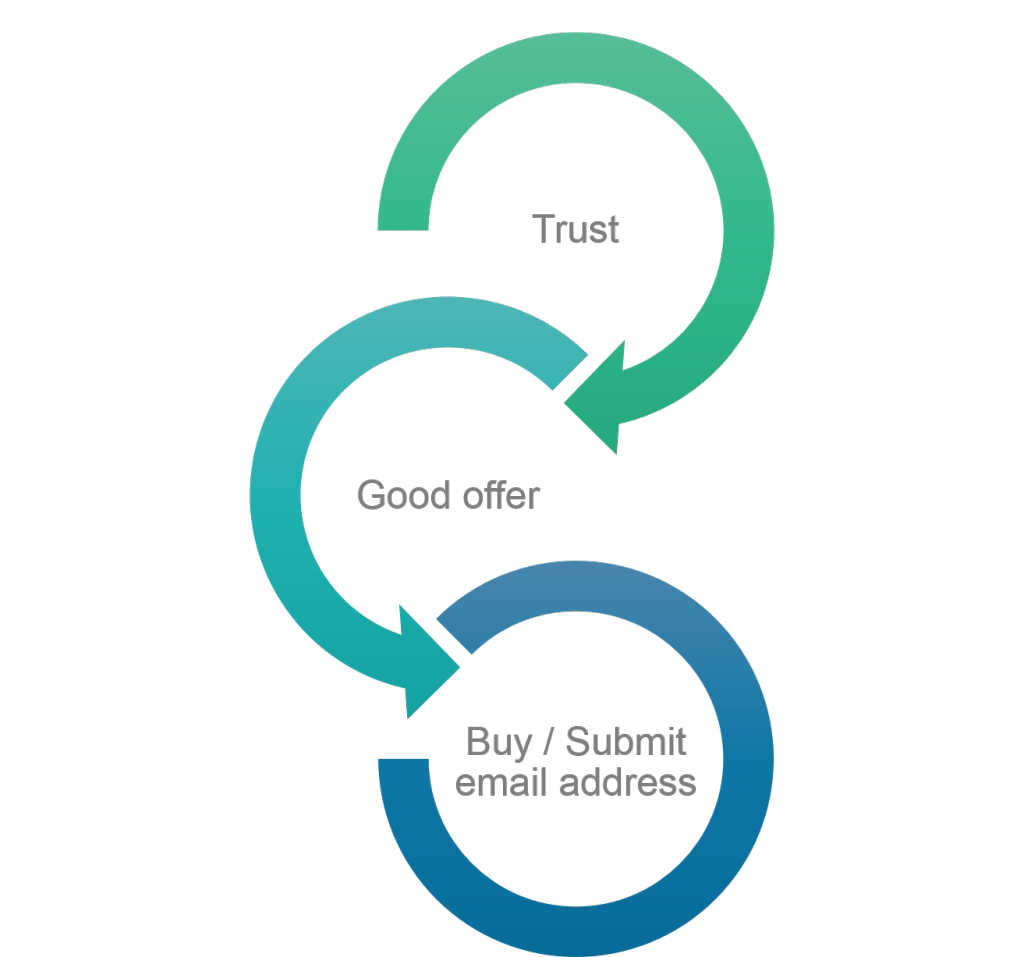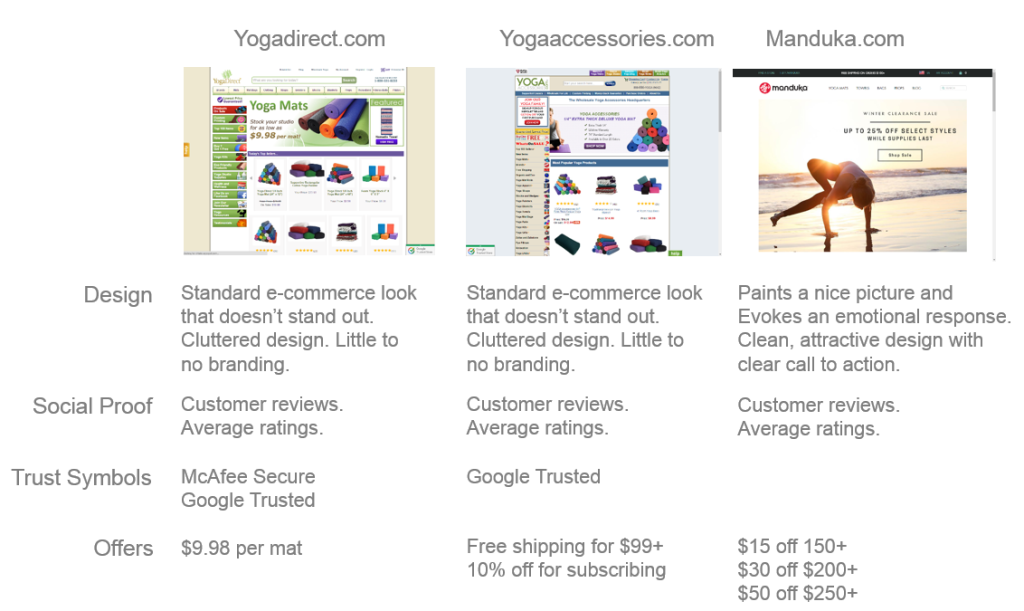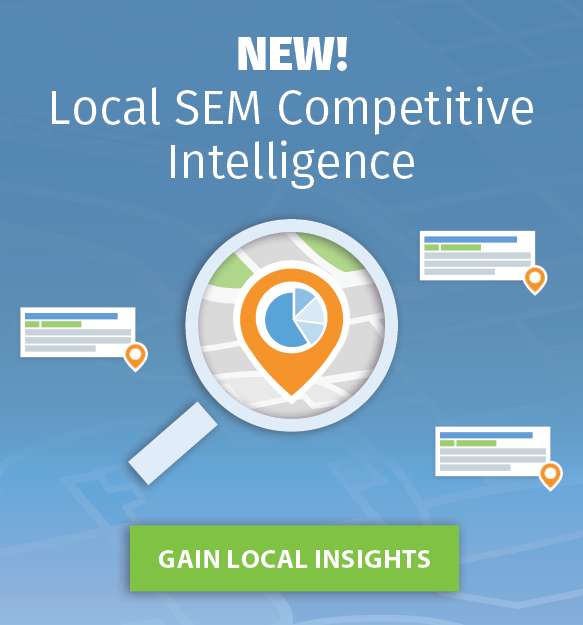
We all need to be honest with ourselves for a moment.
No matter what industry you’re in, there are sure to be competitors. In fact, there’s probably a 99.99% chance that you’re competing against similar products and services day in and day out.
But keep this in mind…
Competition is a good thing.
Does that seem weird? Well, it’s not because competition shows there’s a market and a demand for your product or service. If there aren’t any competitors, that’s a warning sign that there may not be a market for what you’re attempting to sell.
Yet competition is fierce in the digital marketing age we find ourselves in because your prospects are always just two clicks away from choosing a competitor at any point in your sales funnel.
So how can you get a competitive advantage in order to dominate your competition?
That’s where competitive intelligence tools like iSpionage come in handy.
We’ve spent the last 7 years figuring out how to provide the best PPC, SEO, and CRO competitive intelligence data to businesses like yours so they can make smarter strategic decisions and get more quick wins at the tactical level.
That’s what we live and breath for. And over the years, we’ve provided competitive intelligence data to thousands of organizations ranging from small business owners to PPC agencies all the way to some of the biggest PPC spenders in the world.
But that’s not actually what this article is about.
This article is about the factors that affect purchase behavior online and how they tie into competitive intelligence.
You see, we want you to be able to use competitive intelligence data to get actionable insights about your competitors. We also want you to better understand the factors that influence online purchasing behavior so you can improve your site, increase conversions, and dominate your competition.
Are you ready to learn more about the primary factors that affect purchase behavior online and how they tie into competitive intelligence?
Good, let’s jump right in.
The Primary Factors That Affect Purchase Behavior Online
To understand these primary factors, we need to understand how people buy online.
First, they see an ad on a site like Google (or maybe a search result). Then, based on what they see, they decide whether or not to click on your link or a competitor’s’ link.

After this step, prospects are taken to your site where the design makes the first impression.
Is your site modern and attractive? Are there logos, trust symbols, and testimonials that inspire confidence in visitors? And most importantly, is your site designed well enough to convince people to trust giving their credit card to your company?
This is the first thing visitors take in.
Next, they’re going to be considering your offer. Is your price competitive enough to buy from you, or does it seem too high for the product or service? Do you have any kind of deal going on? Is there a special offer or discount they can take advantage of?
Everyone likes getting a deal, so at this point they want to make sure they’re going to get a good price and, at the very least, a competitive enough price to make it worth purchasing from your site versus taking the extra time to shop around. They’re also interested in finding out if there’s a special offer going on right now that they need to take advantage of before the deal goes away.
Once all of these factors have been taken in, your visitors make a decision about whether or not to provide an email address so you can stay in touch or whether or not they’re going to make a purchase.
But both of those decisions hinge on the factors we briefly described above. Here’s what this looks like in graphical form:

Let’s break this down a bit further before discussing how to use competitive intelligence to improve trust, create better offers, and generate more conversions for your site.
What Convinces People to Trust a Site?
#1: Website design and UX (the bar is set quite high these days!)
The first thing people take in are your website’s design and user experience, keeping in mind that the bar has been set quite high these days.
Let’s use a yoga mat eCommerce store as an example.
Pretend for now that you’re starting a yoga mat store at Yogadirect.com. You’ve found a supplier in China through AliBaba and have decided to open your own store.
Two of your top competitors are YogaAccessories.com and Manduka.com. Let’s compare the site designs side by side to see how your site design stands up to the competition.

After a quick review, you’ll notice that YogaDirect.com and YogaAccessories.com have simlar designs with YogaDirect’s site being slightly nicer. Manduka, on the other hand, has a gorgeous site design and has done a lot more to stand out from a branding perspective.
What this tells us is that our site looks good enough to compete with YogaAccessories.com but would need a major face lift if we ever expected to be compared side by side against Manduka.com.
Here’s a quick recap of what we’ve learned so far:

#2: Social Proof
Next up for trust factors is social proof.
So what exactly is social proof?
Social proof is examples of real people you can show who like, have used, believe in, or will vouch for your product.
This can come in the form of testimonials, social media follower counts, expert reviews, user ratings, celebrity testimonials and more (you can read more about social proof here and here).
So how do our examples stores score when it comes to social proof?
To be honest, none of them do a very good job on their homepages. They don’t show off how many social media followers they have, nor do they include any testimonials or reviews.
But on their product pages it gets a little better.
YogaDirect, for example, includes customer reviews and average ratings on their product pages as seen below. This definitely is a step in the right direction.
 YogaAccessories does the same thing and shows the average review rating next to their product image in addition to including customer reviews at the bottom of their product pages. Here’s an example of what this looks like:
YogaAccessories does the same thing and shows the average review rating next to their product image in addition to including customer reviews at the bottom of their product pages. Here’s an example of what this looks like:
Manduka does something similar with average ratings at the top of the page and reviews written out at the bottom of product pages (as seen below).

When it comes to social proof, all three sites are doing pretty much the same thing, which means if one of them added social media followers or a celebrity endorsement, they’d be able to stand out from the competition.
This also shows why competitive intelligence comes in handy, because the faster you learn about differences like these, the faster you can implement changes that will help you to stand out from the competition.
Here’s a quick scorecard to show what types of social proof each site is using:

#3: Trust Symbols
Next up is trust symbols.
Trust symbols are symbols you can display that show your site is safe, secure, and can be trusted.
YogaDirect uses a trust symbol in the website footer to show that the site is McAfee Secure.

YogaAccessories has a symbol that says “Google Trusted Store” to imply that Google trusts their business which means visitors can too (YogaDirect has the same trust symbol, but it can’t be seen in the screenshot above).
 Manduka, on the other hand, doesn’t use any trust symbols. Since their site design looks so nice, they may not need to use them, but it’s also possible that trust symbols would help them to convince more visitors to trust the site with their credit card information.
Manduka, on the other hand, doesn’t use any trust symbols. Since their site design looks so nice, they may not need to use them, but it’s also possible that trust symbols would help them to convince more visitors to trust the site with their credit card information.
Here’s the final trust symbol scorecard:
#4: A Well Known Brand
The last point we’re going to cover related to website trust is creating a well known brand.
If your brand is well known, then by default people will trust your business more.
Let’s say you come across a site randomly through a Google search that you’ve never heard of before. The design is decent, but you haven’t ever heard of the brand prior to landing on their site.
At this point, you may trust the brand, but you also may not trust them yet.
Contrast this with a brand you see all the time on T.V. Every time you turn on the television, you seem to see an ad by the company. Then, you do a Google search and end up on their website.
In this second scenario, there’s built in trust because you’ve heard of the brand before and are already familiar with their product or service.
This holds true for a company like Lululemon. They’ve spent a lot of time and money building a well known brand in the yoga space which means two things:
- They can charge a premium price for their products, and
- There’s built-in trust due to the fact that they’ve established themselves as a well-known and well-liked brand.
The point here is that the more well known your brand is, the less important the first two factors will be. Yes, design and social proof still matter, but at this point, nobody needs Nike to include a testimonial about a product to convince them their shoes are high quality.
Takeaway: If you’re brand is well known like Nike or Lululemon, then you don’t have to worry about social proof as much, but if it’s not, then you need to make up ground by expertly leveraging social proof to increase trust in your brand and your website.

Now that we’ve covered the main factors that convince people to trust a site, let’s move on to discuss the second factor that has a big impact on online purchase behavior.
Factor #2: A Great Offer
One thing we’ve noticed after 7 years in the competitive intelligence space is that the best marketers not only know how to build trust in their websites, but they also know how to create the most compelling offers.
This can be in the form of free shipping, a limited-time discount, or a free, irresistible guide.
Our yoga stores are all doing something to take advantage of people’s desire to find the best offer possible.
YogaDirect, for example, includes a red “Sale” button near the top of the page and also advertises $9.98 yoga mats. They probably don’t want everyone to buy a yoga mat for $9.98, but the low price draws people in and means they’re more likely to consider other mats at which point YogaDirect can convince visitors to purchase a higher priced mat.

Manduka also has a special “Spring Bliss” event going on where they offer $15 off orders of $150+, $30 off orders of $200+, and $50 off of $250+ orders.

YogaAccessories is also playing the “best offer” game by offering free shipping on orders over $99 and a 10% off discount for anyone who signs up for their newsletter. The latter discount should be highly effective at getting people to sign up for their newsletter at which point they can continue marketing to subscribers while also convincing people to make a purchase since they’ll instantly save 10% off of their order.

Here’s the offer scorecard we just reviewed:

Out of all these offers, we like YogaAccessories offers the most since they get a lot with their deals without giving as much away.
Here’s a final score with all of the points we’ve covered so far:

Tying All of this into Competitive Intelligence
So how does all of this tie into competitive intelligence?
For starters, you need to know what your competition is doing so you can do better, or at the very least match what they’re doing.
If you’re competition uses a celebrity endorsement, like SimpliSafe does below, then you may need to go out and get a similar (or better) celebrity endorsement, etc.

The point here is that by studying your competitors, you can learn new ways to improve trust on your site and what needs to be changed in order to meet (and hopefully exceed) the standards set by your top competitors. And competitive intelligence makes it easier to gather this type of information faster.
With our previous yoga sites as an example, there are over 30 sites bidding on the PPC term “yoga mat.” If you tried to click through all of these sites manually within Google results, it would take forever to gather the same amount of information you have at your fingertips with iSpionage (not to mention it’s unethical since you make your competitors pay for a click each time you click on their ads).
iSpionage competitive intelligence data shows you how to easily see who’s bidding on the same PPC terms you are so that you can quickly review their sites, get a better understanding of the competitive landscape, and come up with new ways to strengthen your competitive positioning.
Competitive intelligence also helps you to come up with more competitive offers in a shorter amount of time.
By studying the top sites you’re competing with and by setting up automated alerts, you can get ideas about how to discount and/or create compelling offers that convince people to sign up or purchase your product or service.
The main takeaway here is that there are unique ways to create compelling offers, such as bundling products, offering free shipping, or running a time sensitive event, and you can come up with better offer ideas by spying on your competitors, instead of relying on your marketing team to come up with every new idea on their own. It ends up being like having your competitors report their strategy to you first thing every morning.
This type of analysis should also be done every 30 to 90 days, depending on how large your organization is and what type of product or service you’re selling. Enterprise organizations can and should monitor this type of information on a monthly and even weekly or daily basis whereas small businesses can afford to do this type of data gathering every 90 days or so.
It’s also important to remember that this type of competitor intelligence data should first be used at the strategic level so it will then be effective at the tactical level. Sales, offers, decisions to redesign a site are all made at the strategic, “board-room” level before trickling down to things like ad copy used in ads, etc. This means competitive intelligence gathering and analysis should all be reviewed for strategic decision making at least every 90 days.
But a guide like this wouldn’t be that useful without some specific action steps, so here are some specific steps you can take this week to begin gathering the competitive intelligence data you need to create more trust on your site and to come up with better, more compelling offers:
- Start by filling out a competitive intelligence audit spreadsheet like the template we’ve created here. This will give you a better idea about where you stand in the competitive landscape and where you have room to improve. (Note that there are 4 tabs for quarterly competitive analysis.)
- Update the spreadsheet every 30 to 90 days to stay up to date and to continue gaining competitive intelligence data you can draw insights from on a quarterly basis.
- Sign up for iSpionage and set up competitor alerts to automate your competitive intelligence gathering moving forward.
If you follow these steps, you should be good to go when it comes to creating better offers and building a site your visitors trust and love.
Good luck!










